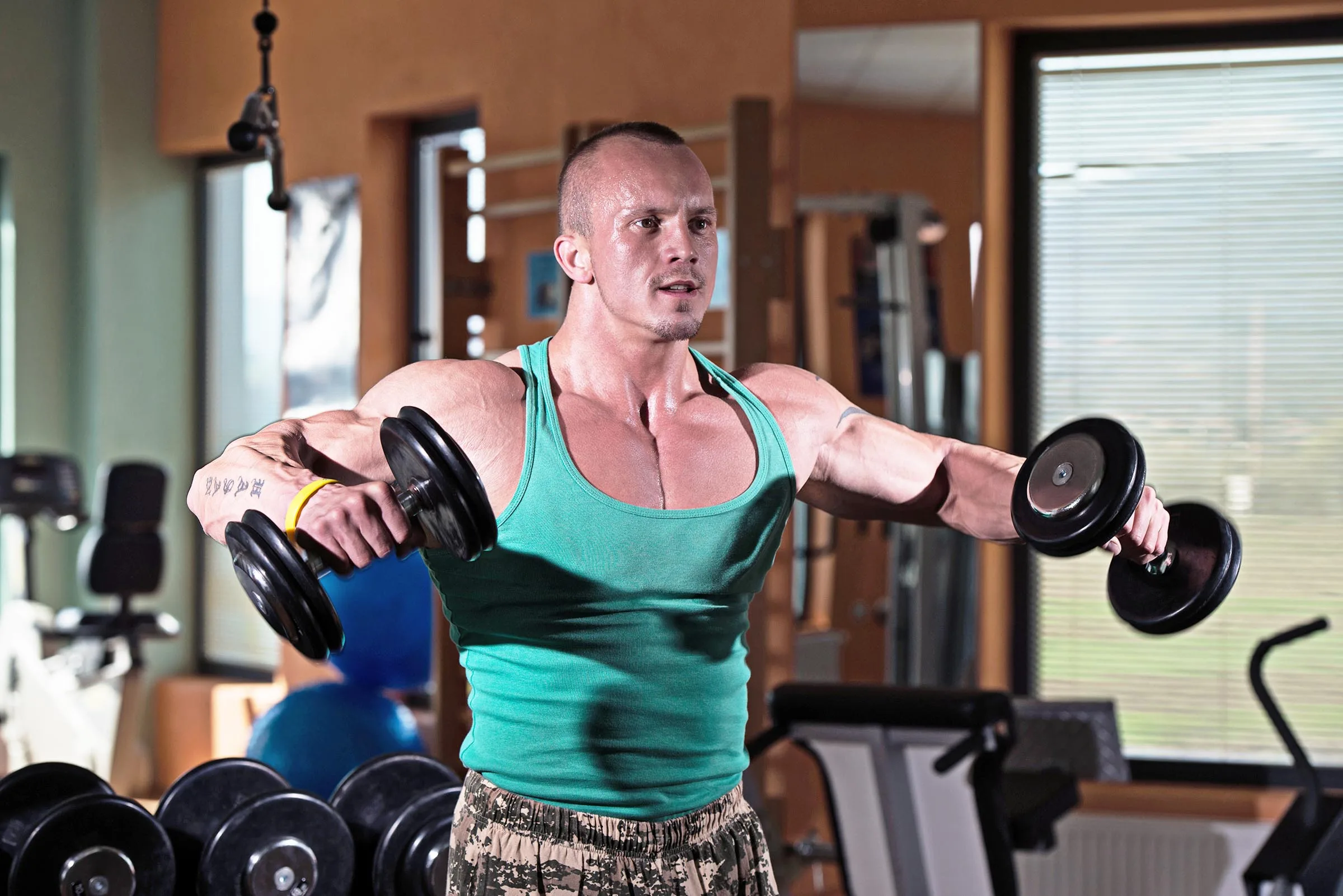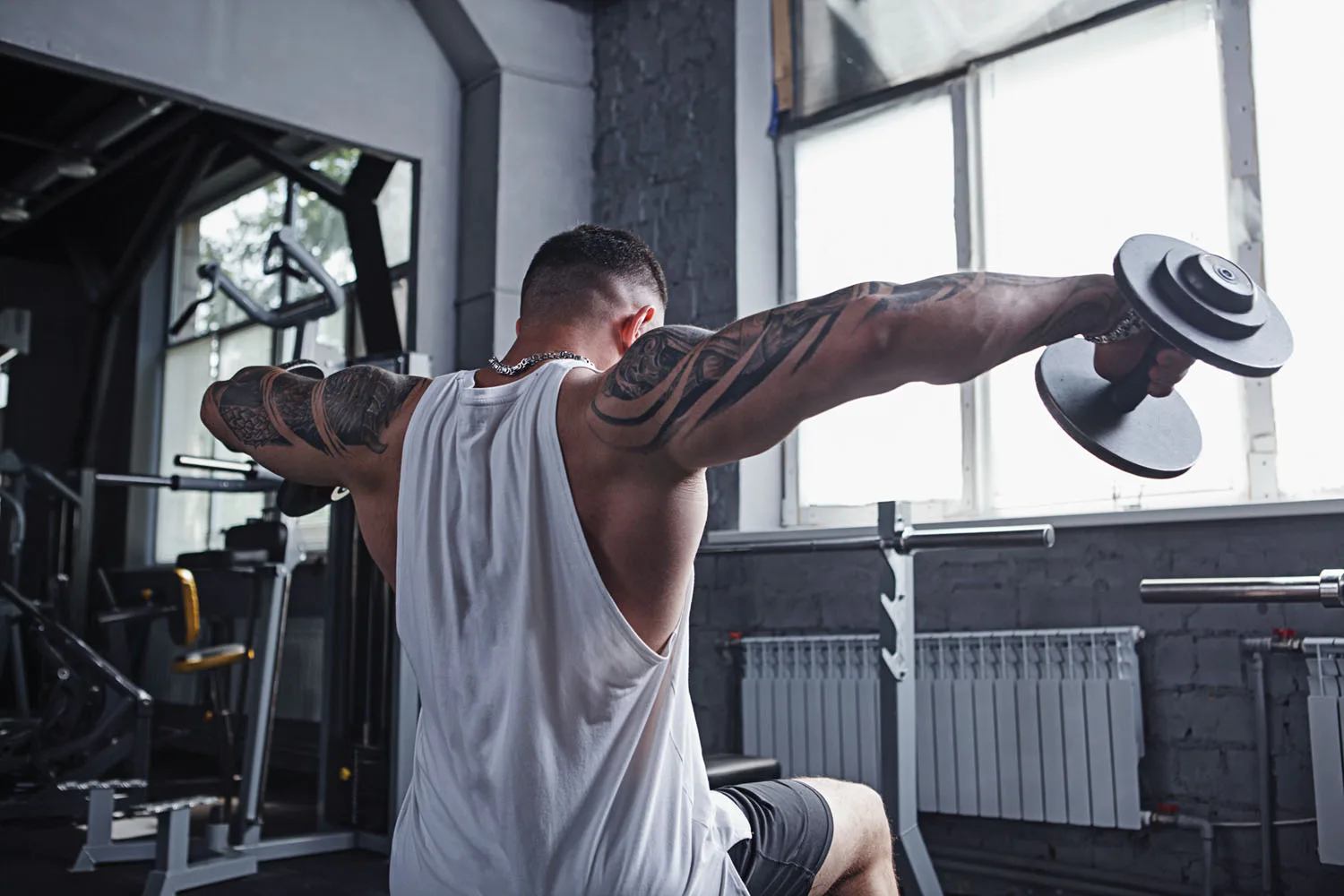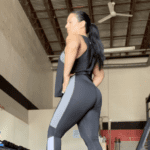Lateral Raise Variations for Thick Shoulder Gains

Even if you don’t run in the bodybuilding scene, you probably know what a lateral raise looks like. They’re a quintessential upper body isolation movement to build your delts and create a wide top of your hourglass shape. If you’re not working in these variations, you’re leaving shoulder gains on the table!
Sari Terranova is a total supermom, CPT, and nutrition coach who introduces women and youth athletes to the power of weightlifting, bodybuilding, powerlifting, and functional strength training. Read on to get a better grip on the lateral raise and its many shoulder-pumping variations.

Change the Way You Train
Build Better Shoulder Beef (Pain-Free)
There’s a reason the phrase, “it’s like a weight off my shoulders” is so enduring. We do carry a lot on them, physically and metaphorically.
Our shoulders, the ball-and-socket joints that hold so much emotional tension, are also delicately-constructed powerhouses responsible for much of our upper body’s mobility and strength.
Keeping them strong, pain-free, and flexible is important, whether we’re shouldering a lot of weight ourselves, or lifting it off of someone else. You never know when you might have a superhero moment — gotta stay ready.
Lateral raises are excellent for developing those sexy boulder shoulders that bodybuilders and figure competitors covet, but we don’t want them to just look good. Form is paramount to making those hypertrophy and strength gains in tandem safely.
Shoulder Anatomy Refresher
Understanding the complexity of the shoulder structure, which is paradoxically delicate and strong, is key to making gains while avoiding painful injuries.
Your shoulders are composed of several muscle groups: the rotator cuffs, rhomboids, trapezius, and deltoids. When people talk about shoulders in the weight room, they’re generally referring to the anterior, lateral and posterior deltoids — or “delts”.
The overhead press and the lateral raise are vastly different. The OHP (aka strict press) is a compound movement that engages all three deltoid heads, while the lateral raise is an isolation movement that primarily targets the… wait for it… lateral deltoids.
In other words, you shouldn’t expect to laterally raise the same weight you can press. Shoulder injuries are common, painful, and notoriously costly to repair and rehab, so when performing lateral raises, drop the ego and focus on lower weights to maintain bulletproof shoulders over the long term.
You can do lateral raises with resistance bands, cables, dumbbells, an EZ Bar, pre-loaded barbell, or even a barbell with a landmine attachment. Grab your weapons of choice and get started with these lateral raise variations.

Standing Lateral DB Raise
The standard lateral raise isolates the lateral deltoid and is simple in its execution, requiring only light dumbbells. But it’s far from easy. If you keep a steady mind-muscle connection and tempo, you’ll be sore for days. Be sure to keep your dumbbells at a weight where your last rep is challenging without encouraging you to “momentum cheat” (or kip) to hoist them up.
How To
Stand with your feet about shoulder-width apart, dumbbells at your sides, palms facing in. Keep your core engaged and torso straight, making sure your shoulders don’t roll forward.
Raise your arms with slight abduction in the scapular plane (a hair in front of your body, rather than straight out to the side), keeping your arms straight but elbows soft.
Lift the dumbbells up to shoulder height, pause for a count, and then slowly lower them to starting position. When you get to the bottom of the movement, don’t release the tension. Immediately pull back up to the top of the movement.
Aim for a tempo of 1-1-3-0 and 10-12 reps per set.
Vary Your Grip
Once you’ve mastered the basic movement, experiment with different grips to target each deltoid head differently. Research shows that internal and external rotation, as well as elbow flexion can impact the isolation of the different deltoid heads (1).
For example, when in starting position, rotate your humerus (upper arm) externally so your palms are facing out, thumbs toward the ceiling. This targets the front of the shoulder in addition to the medial head. If you internally rotate your humerus (palms facing behind you, pinkies out) it puts more emphasis on the rear delts.
I like to use these as a finisher on shoulder day, doing 6-10 reps of each grip in succession – for example grabbing 5-10 lb dumbbells and banging out 8 reps thumbs out, 8 reps neutral grip, and 8 reps pinkies out, rest, repeat.
Resistance Band Single Arm Lateral Raise
Resistance bands are excellent tools for improving shoulder mobility and rehabbing injuries or an extended absence from the weight room. They’re also great for warming up your shoulders and gradually building strength. Bands can be easier on the joints than free weights and challenge your muscles differently with more tension at the top of the movement.
How To
Grab a light long-loop resistance band and stand with one end of the loop under your left foot, and the other end of the loop in your right hand, palm facing your thigh. With feet about shoulder width apart, keep your torso erect/spine neutral and raise your right arm to almost a 90 degree angle.
Pause at the top of the movement for a count and lower slowly. Repeat for 12-15 reps before switching to the other side.
You can also do these as a dual arm exercise if you have a long enough resistance band or one with handles. Just stand on the middle of the band and grip the handles at your sides. Perform the movement as you would perform the dumbbell raise.
Leaning Single Arm Lateral Raise
Then leaning single arm lateral raise is a popular variation. It’s usually performed by holding on to a rack with one hand, then leaning your body away from the rack, increasing the range of motion for the working shoulder.
Another way to complete this exercise effectively, while eliminating the momentum cheat, is to use an incline bench to support your torso. This further isolates the medial delt, so remember to check your ego. Form trumps weight.
How To
Set the bench between 45-60 degrees and lean your left side against the bench with your knees on the seat and left arm resting atop the bench. Gripping a light dumbbell in your right hand, palm facing your thigh, slight bend in the elbow, raise the dumbbell until your hand is in line with your shoulder.
Pause a beat at the top of the movement, then lower slowly. Do not rest the dumbbell against your thigh at the bottom of the movement, but keep that tension throughout your reps for maximum gains.
Kneeling Landmine Lateral Press
While technically a press and not a raise, this lateral exercise is unique in its ability to isolate the medial deltoid. The landmine is a tubular attachment, either portable or affixed to a rack, that allows you to insert a barbell at one end and rotate it 360 degrees.
This allows you to safely press laterally in a way that is not possible with free weights. The weight is also supported by the base of the barbell making it more joint-friendly.
How To
With the barbell inserted into the landmine at one end, kneel beside the free end and grip the bar’s sleeve. Pull the bar up to rest in a pressing position at your shoulder. Keeping your core engaged, press the bar up and out to your side until your arm is straight. Lower the bar to your shoulder and repeat for 6-10 reps before switching sides.
Start with just the bar, remembering that we never want to overload a lateral movement. If an olympic barbell is too heavy, many gyms also have 35 and 15 lb bars that fit into a landmine base.
Programming Lateral Raises
When programming lateral raises into your weekly workouts, you aren’t limited to just Push Day. In fact, lateral raises are great exercises to throw into lower body supersets as they allow ample rest and recovery between sets.
If you’re incorporating laterals into a heavy shoulder workout, use them as accessory movements after heavy presses. You don’t want to pre-exhaust your delts before completing heavier compound lifts.
However you choose to program them, if you want rounded, sexy boulder shoulders that are as strong and functional as they are aesthetically pleasing, drop the ego, drop the weight, and focus on form. Now go get a shoulder up on the competition, Heroes!
Works Cited:
1. Coratella, G., Tornatore, G., Longo, S., Esposito, F., & Cè, E. (2020). An Electromyographic Analysis of Lateral Raise Variations and Frontal Raise in Competitive Bodybuilders. International journal of environmental research and public health, 17(17), 6015. https://doi.org/10.3390/ijerph17176015
Find Your Perfect Training Plan
Sometimes all you need to reach your destination on your fitness journey is an expert guide. We've got you covered. Browse from thousands of programs for any goal and every type of athlete.
Try any programming subscription free for 7 days!
Want Training Tips, Exercise Guides & Knowledge Bombs Sent to Your Inbox?
Sign up for the FitNerd newsletter from TrainHeroic
Related articles
3 Ways to Improve Mobility Without Stretching
Are you still trying the endless foam rolling and stretching exercises to get that deep squat position? We know how important mobility is for great, or even GOOD performance. All professional athletes have some comfortability in end ranges of motion. So, what else do...
The Ultimate Guide to Lunges: Queen of all Glute Exercises
Your glutes are the largest muscle group in your body. They’re responsible for almost everything your legs do—walking, running, jumping, squatting, lunging, and just standing upright. As far as moving through space goes, strong glutes are the bedrock of overall...
A Beginner’s Guide to Steel Mace Training
Author: Jesse Grund
Mace training will make you a better mover without it’s not confining you to a fixed space or predetermined range of motion. Second, it’s an offset load with 80 to 90 percent of the weight in the head. You’re also constantly having to resist rotation, which creates greater core engagement.

Join the community
Sign up for the latest training news and updates from TrainHeroic

About TrainHeroic
Support
Made with love, sweat, protein isolate and hard work in Denver, CO
© 2022 TrainHeroic, Inc. All rights reserved.






